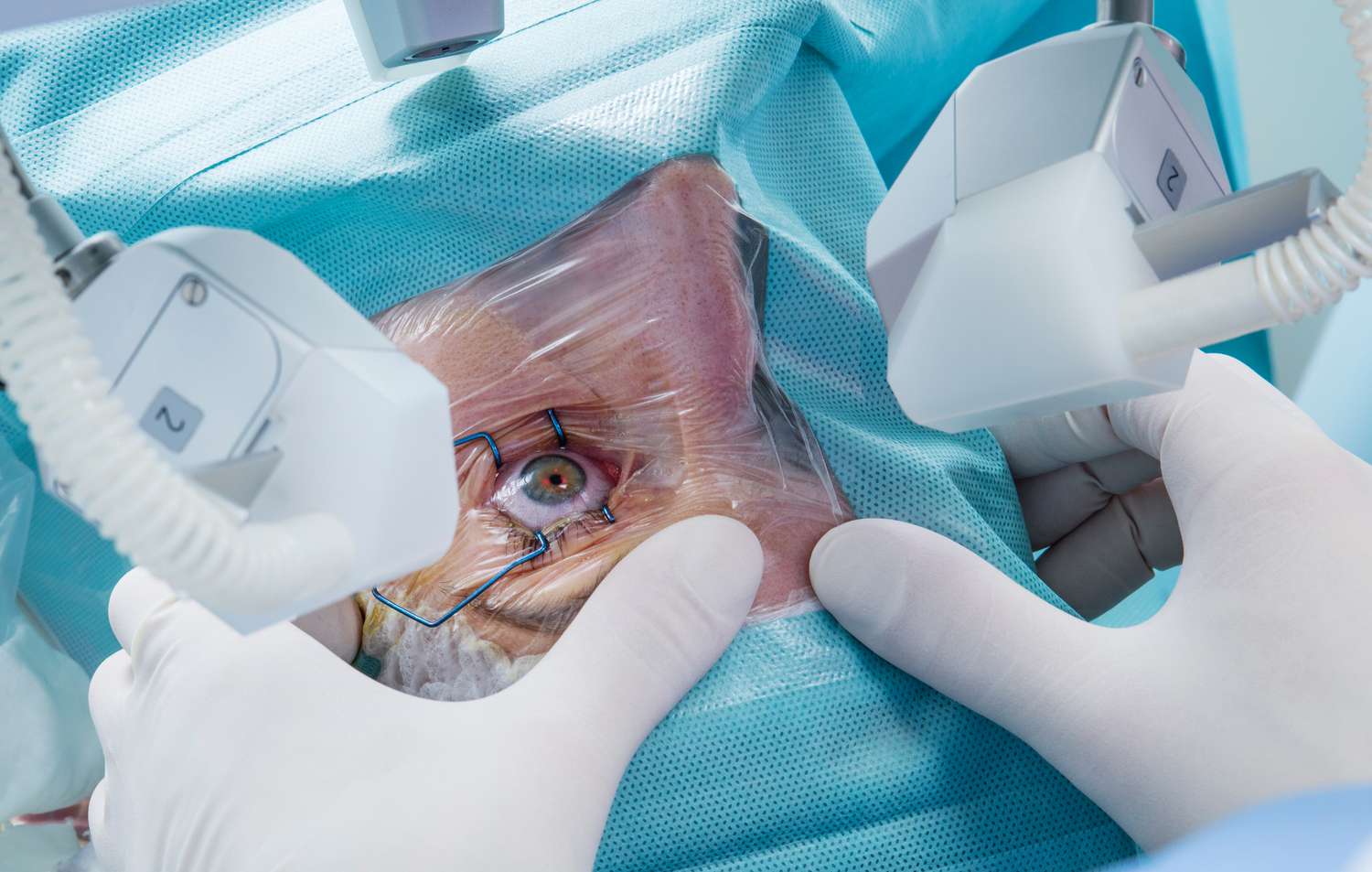Vision correction has come a long way in recent years, with advanced surgical techniques offering patients the opportunity to improve their eyesight significantly. Among the most popular procedures are LASIK (Laser-Assisted In Situ Keratomileusis) and SMILE (Small Incision Lenticule Extraction). Both methods have their advantages and disadvantages, making the choice between them a crucial one for those seeking clearer vision. This article will explore the differences, benefits, and potential drawbacks of LASIK and SMILE, helping you make an informed decision.
Understanding LASIK Surgery
What is LASIK?
LASIK is a widely recognised laser eye surgery that reshapes the cornea to correct refractive errors such as myopia (nearsightedness), hyperopia (farsightedness), and astigmatism. The procedure involves creating a thin flap on the cornea, which is lifted to allow an excimer laser to precisely reshape the underlying corneal tissue. After the laser treatment, the flap is repositioned, allowing for a quick recovery and minimal discomfort. This innovative approach to vision correction has transformed the lives of millions, offering them the freedom to engage in activities without the hindrance of glasses or contact lenses. The technology behind LASIK has evolved significantly since its inception, incorporating advanced techniques such as wavefront-guided LASIK, which customises the treatment based on the unique characteristics of each patient’s eyes.
Benefits of LASIK
One of the most significant advantages of LASIK is its speed. The entire procedure typically takes less than 30 minutes, with most patients experiencing improved vision almost immediately. Additionally, LASIK boasts a high success rate, with many patients achieving 20/25 vision or better. The minimal recovery time allows individuals to return to their daily activities within a day or two, making it a convenient option for those with busy lifestyles. Furthermore, the long-term cost-effectiveness of LASIK can be appealing; while the initial investment may seem substantial, many patients find that they save money over time by eliminating the need for glasses and contact lenses. The procedure has also been shown to enhance quality of life, as individuals can partake in sports and outdoor activities without the worry of losing or damaging their eyewear.
Read more at: What to Expect During and After LASIK Surgery Recovery
Potential Drawbacks of LASIK
While LASIK is generally safe, it is not without risks. Some patients may experience side effects such as dry eyes, glare, or halos around lights, particularly at night. Additionally, not everyone is a suitable candidate for LASIK; individuals with thin corneas or certain medical conditions may be advised to consider alternative treatments. It is essential to undergo a comprehensive eye examination to determine eligibility. Moreover, it is important for prospective patients to have realistic expectations about the outcomes of the surgery. While many achieve excellent results, some may still require glasses for certain activities, such as reading or driving at night. Understanding these nuances can help individuals make informed decisions about their eye care options.
Exploring SMILE Surgery
What is SMILE?
SMILE is a relatively newer technique that also aims to correct refractive errors, particularly myopia and astigmatism. Unlike LASIK, SMILE does not involve creating a flap. Instead, a small incision is made in the cornea, through which a lenticule (a small disc of tissue) is removed. This minimally invasive approach preserves more corneal tissue, potentially leading to a more stable post-operative outcome. The procedure is performed using a femtosecond laser, which allows for precise cutting of the corneal tissue, ensuring that the surrounding structures remain largely undisturbed. This precision is one of the reasons why many patients are drawn to SMILE as a viable alternative to traditional laser eye surgeries.

Benefits of SMILE
One of the primary benefits of SMILE is its minimally invasive nature. The small incision reduces the risk of complications associated with flap creation, such as flap dislocation or infection. Additionally, because SMILE preserves more corneal tissue, it may result in less post-operative dryness and a quicker recovery. Many patients report a more comfortable experience during and after the procedure. Furthermore, the technique has been associated with a lower incidence of glare and halos at night, which can be a concern for some individuals after LASIK. As a result, many patients find themselves returning to their daily activities sooner, with less disruption to their lives.
Potential Drawbacks of SMILE
Despite its advantages, SMILE is not without limitations. Currently, it is primarily suitable for myopia and astigmatism, meaning those with hyperopia may need to consider other options. Furthermore, as a newer technique, there may be less long-term data available compared to LASIK, which has been performed for over two decades. Patients should discuss these factors with their eye surgeon to weigh the pros and cons effectively. Additionally, the availability of SMILE may vary by region, and not all clinics may have the necessary equipment or trained personnel to perform the procedure. This can limit access for some patients, making it essential to consult with a qualified eye care professional to explore all available options tailored to individual needs.
Comparing LASIK and SMILE
Effectiveness
Both LASIK and SMILE have demonstrated high success rates in improving vision. Studies indicate that around 90% of patients achieve 20/25 vision or better with either procedure. However, the choice may depend on individual circumstances, including the type and severity of refractive error. For myopic patients, both procedures offer excellent outcomes, but LASIK may provide a slight edge for those with higher levels of refractive error. Furthermore, it is worth noting that the long-term stability of vision correction can vary between the two techniques, with some research suggesting that SMILE may offer a more stable outcome over time, particularly for those with progressive myopia.
Recovery Time
Recovery times for LASIK and SMILE are generally quick, but there are some differences. LASIK patients often notice an immediate improvement in vision, with many returning to normal activities within a day. SMILE patients may experience a slightly longer recovery period, although most can resume daily activities within a few days. The reduced risk of complications associated with SMILE may make it a more appealing option for some individuals. Additionally, the minimally invasive nature of SMILE, which involves a smaller incision, may contribute to less postoperative discomfort and a quicker return to full visual function, allowing patients to engage in activities such as sports or driving sooner than they might with LASIK.
Cost Considerations
Cost can be a significant factor when deciding between LASIK and SMILE. Generally, LASIK tends to be less expensive than SMILE, as it is a more established procedure with widespread availability. However, the price should not be the sole consideration; the long-term benefits and potential for fewer complications with SMILE may justify the higher initial cost for some patients. It is advisable to consult with your eye care provider regarding the specific costs associated with each procedure. Moreover, many clinics offer financing options or payment plans to help manage the costs, making it more accessible for patients to choose the best procedure for their needs without financial strain. It’s also beneficial to consider the potential savings on glasses or contact lenses over time, which can further influence the overall cost-effectiveness of either option.
Who is a Suitable Candidate?
Candidacy for LASIK
Not everyone is a suitable candidate for LASIK. Ideal candidates are typically over the age of 18, have stable vision for at least one year, and possess sufficient corneal thickness. Individuals with certain medical conditions, such as autoimmune disorders or severe dry eye syndrome, may be advised against LASIK. A thorough pre-operative assessment is crucial to determine candidacy. This assessment often includes a detailed history of the patient’s eye health, a comprehensive vision test, and advanced imaging techniques to evaluate the cornea’s shape and thickness. Such meticulous evaluations ensure that the risks associated with the procedure are minimised and that the expected outcomes are optimised.
Moreover, lifestyle factors can also influence candidacy. For instance, those who engage in contact sports or have jobs that expose them to potential eye injuries may need to consider alternative options. Additionally, patients who are pregnant or nursing are typically advised to postpone surgery until their hormonal levels stabilise, as these fluctuations can affect vision. Ultimately, the decision to proceed with LASIK should be made collaboratively between the patient and their ophthalmologist, ensuring that all aspects of the individual’s health and lifestyle are taken into account.
Candidacy for SMILE
SMILE may be a suitable option for individuals with myopia and astigmatism, particularly those who are not candidates for LASIK. The procedure is generally safe for those with thinner corneas, as it preserves more corneal tissue. However, like LASIK, a comprehensive eye examination is necessary to ascertain suitability for SMILE. This includes evaluating the degree of refractive error and assessing the overall health of the eye, as certain conditions may still preclude patients from undergoing this innovative procedure.
In addition to its suitability for patients with thinner corneas, SMILE is also appealing for those who prefer a less invasive approach. The procedure involves a smaller incision compared to LASIK, which can lead to a quicker recovery time and less postoperative discomfort. As a result, many patients appreciate the reduced risk of complications associated with larger incisions. Furthermore, the minimally invasive nature of SMILE may also be beneficial for individuals who are particularly anxious about surgical procedures, as it often requires less manipulation of the eye. As with any surgical intervention, a thorough discussion with an eye care professional is essential to weigh the benefits and potential risks, ensuring that patients make informed decisions tailored to their unique circumstances.
Making the Right Choice
Consultation with an Eye Surgeon
Choosing between LASIK and SMILE requires careful consideration and consultation with a qualified eye surgeon. During the initial consultation, the surgeon will conduct a thorough examination of your eyes, discuss your vision goals, and evaluate your overall eye health. This personalised approach ensures that you receive the best possible recommendation based on your unique circumstances.
Personal Preferences and Lifestyle
Individual preferences and lifestyle factors should also play a role in the decision-making process. For example, those who lead active lifestyles may prefer the minimal invasiveness of SMILE, while others may opt for the established track record of LASIK. Understanding the potential risks and benefits of each procedure can help you make a choice that aligns with your vision needs and lifestyle.
Long-Term Considerations
When deciding between LASIK and SMILE, it is essential to consider the long-term implications of each procedure. While both techniques have high success rates, the long-term stability of vision correction may differ. SMILE’s preservation of corneal tissue may offer advantages in terms of corneal health over time. Discussing these aspects with your eye surgeon can provide valuable insights into the best option for your future vision.
Conclusion
In the debate of LASIK vs. SMILE, both procedures offer effective solutions for vision correction, each with its unique advantages and potential drawbacks. LASIK has a long history of success and is widely available, while SMILE presents a minimally invasive alternative that may be suitable for specific candidates. Ultimately, the best choice depends on individual circumstances, preferences, and the guidance of a qualified eye care professional.
As vision correction technology continues to evolve, patients can expect even more options and advancements in the future. Whether opting for LASIK or SMILE, the goal remains the same: achieving clearer vision and an improved quality of life. With the right information and professional advice, individuals can confidently navigate their vision correction journey.

